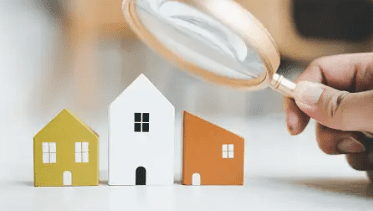Where to Find the Cheapest Houses in the UK Right Now
Buying a house is an extremely expensive business, more so in parts of the UK. House prices surged £2,200 more from June to July this year. The current average house price in the UK rose to £291,268, but there is so much variation depending on where one would find themselves. While London represents the most unaffordable area, other parts of the UK are very cheap. Here is a view of where the cheapest places to buy a house in the UK are and what is causing these price changes.

House Prices Are Rising
Figures from the Halifax House Price Index have revealed the new state of house prices in the UK. The average price in July was 0.8 per cent higher than the previous month. Admittedly, this doesn’t seem to be a lot when considering either the average buyer or seller, but in fact, it is the highest rise for some time. This pushed the average price of a house in July to £291,268 compared with £289,042 in June.
The most expensive houses are located in London, whose average stands at £536,052. This is more than three times higher than what one would possibly be expected to pay for the same type of house in one of the cheapest regions, North East, average £171,663. It shows just how much prices can differ depending on where you are.
If you are thinking of a more affordable region to buy a house, then here are the cheapest regions in the UK:
- North East: £171,663
- Northern Ireland: £195,681
- Scotland: £205,264
- Yorkshire and the Humber: £206,480
- Wales: £221,102
- North West: £232,489
- East Midlands: £239,448
- West Midlands: £253,649
- South West: £301,359
- Eastern England: £330,282
- South East: £386,468
- London: £536,052
Price Trends Across the UK
House prices have risen across most parts of the country recently. The greatest rise was experienced in Northern Ireland, where, between June and July, home values rose by 5.8%. This seems a rather appreciable rise compared with most areas.

Not all areas, however, are experiencing inflation. For example, in Eastern England, the price actually fell by 0.4% last month. But even with this slight decrease in their case, the general trend is for house prices to go up.
What’s Causing the Price Changes?
Halifax’s mortgage boss, Amanda Bryden, said that house prices had been slowly but surely creeping up. She said the recent 0.8% rise was the largest we’ve seen for a good few months. In part, this is due to the fact that not long ago the Bank of England cut its base rate. Lower base rates usually mean that mortgage rates also go down, which can make it easier for people to buy homes.
Bryden further commented that while the reduced mortgage rates are a plus, it is still hand-to-hand combat out there. One of the challenges is the difficulty of availability in homes for sale and also prices are high for many.
Looking Ahead
Bryden says house prices will continue to move gradually upwards through the rest of the year. If mortgage rates do fall further, more people will be able to buy houses. But the real issues of affordable homes and the cost of living remain unresolved.

Whereas in general, the outlook on the house prices is that they are going up, wide swathes of the UK are distinctly cheaper than others. The North East currently makes for the cheapest region to buy a home in, at just £171,663. London stands at an extreme end in itself, remaining very dear, with average prices hitting £536,052. If you’re in the market to buy a house, it might be worth considering regional differences to get a place within your budget.


